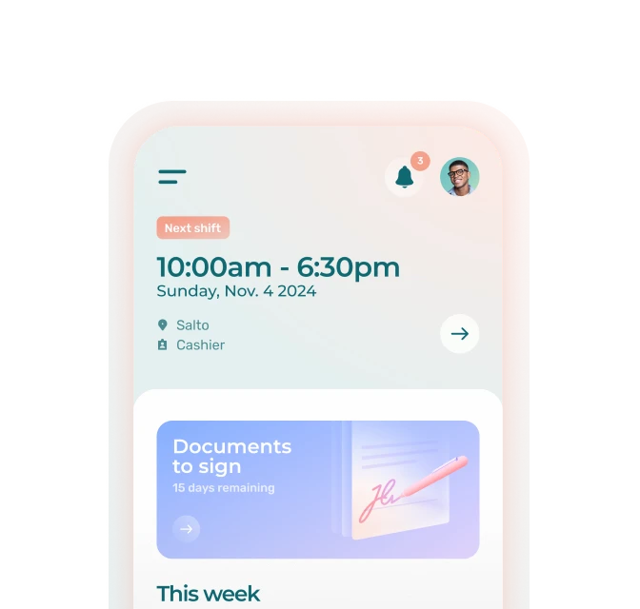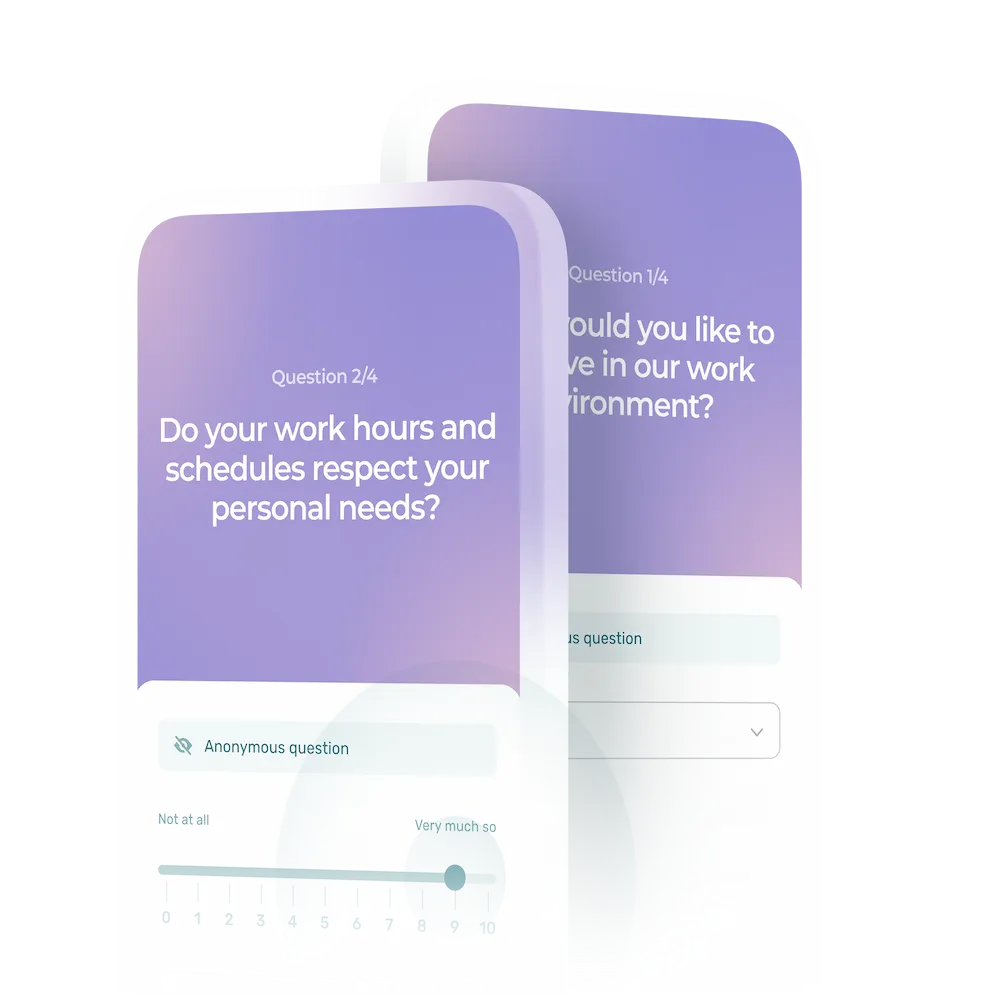Recruiting a new employee represents a major investment of time and money for companies.
It is therefore essential that organizations wishing to improve the way they do business take a close look at their recruitment process.
Failed recruitment also has major consequences for a company: reduced productivity, loss of money, negative effect on team morale, etc.
Whether your company is growing or you simply want to update the way you do things, this article will help you implement concrete strategies to minimize your recruitment costs.
In this article, you will learn:
- What is the cost of recruitment
- What influences the cost of recruitment
- How to calculate the cost of hiring
- How to optimize the cost of hiring
The Cost of Recruitment: What Is It?
The cost of recruitment refers to the actual cost of hiring a new employee for a company. It can include a multitude of different costs, depending on the company’s needs, the economic context, the industry and/or country in which the company operates, etc.
In other words, the cost of recruitment refers to the resources the employer must invest in order to add a new employee to its team. Recruitment mobilizes many internal and external resources, and also involves a number of stages.
In France, recruitment costs generally range from 5000 to 8000 euros, but can vary from company to company. In Canada, recruitment costs an average of $4129, according to EssayHub.
In general, experts estimate that the cost of recruiting and integrating an employee is somewhere between 15% and 25% of their gross annual salary.
What Influences the Cost of Recruitment?
There are two main categories of elements that can influence the cost of recruitment.
- The time required for the company’s employees to complete all the recruitment steps.
- Expenses directly linked to the process, such as the cost of advertising the position or hiring a headhunter.
The cost of recruitment can also be influenced by the type of position to be filled. For example, a low-skilled position will probably require less investment. A managerial or otherwise specialized position will be more difficult to fill and will probably require more resources.
Needs Analysis
Before embarking on a recruitment process, companies first need to take the time to assess their workforce needs. They can then identify the positions to be filled and the skills required for each.
The recruiting team can draft recruitment ads, taking care to include a job description, explain the working conditions, and identify the current salary scale, for example.
This process can take more or less time, depending on the experience of the person in charge of recruitment and the complexity of the company’s needs.
Job Posting Costs
It’s essential to publish recruitment ads on the right platforms to ensure maximum visibility, including social networks.
The best recruitment ad sites are typically not free, and can therefore become costly over time for companies. In France, for example, costs can run as high as 1000 euros for a single posting. In Canada, specialized sites generally charge between $300 and $400.
Some companies may also choose to take part in job fairs or use recruitment agencies, which will incur additional expenses.
Time Spent on the Recruitment Process
When the time comes to recruit a new employee, many of the company’s employees are involved in the process: managers, HR managers, team members, and so on. The time they devote to the various tasks involved in the recruitment process must therefore be factored into the overall cost of an employee.
This includes posting job offers on specialized sites and social networks, analyzing and sorting incoming resumes, conducting telephone interviews and job interviews, checking candidates’ backgrounds and references, following up with candidates, welcoming and integrating them, providing training, etc.
Costs Related to the Selection Process
The selection process generally includes the cost of various recruitment tests, such as psychometric tests or skills assessments.
Administrative Costs
Hiring a new employee inevitably entails costs related to administrative procedures, whether for creating employment contracts or various tax documents, for example.
Some companies also choose to use application management software (sometimes referred to as ATS) to speed up the recruitment process, which also entails additional costs despite the productivity gains.
HR managers must also take the time to create employee records, taking care to record all important information. Many HR managers prefer to use personnel management software that enables them to digitize employee records. At the same time, employee data is better protected.
Reception and Integration Costs
To welcome and integrate new employees, companies need to mobilize financial resources, whether for training, team-building activities, or even the purchase of equipment.
Some software packages, such as Agendrix, make it easier to onboard new employees by automating a number of processes, saving time and productivity for the recruitment team.
Recruitment Budget: Calculating the Cost of an Employee for a Company
It’s essential to calculate the cost of hiring in a company to be able to make a realistic budget and optimize the various costs.
The formula for calculating the recruitment cost per employee is :
Cost of an employee for a company = direct costs + indirect costs
Things to Consider
Direct costs include :
- The employee’s salary
- Job advertisement
- Recruiting tools such as ATS
- The time of the person or team in charge of recruitment
- The services of a recruitment agency or headhunter
Indirect costs include :
- The purchase of new equipment for the employee (computer, uniform, work tools, etc.)
- Printing of the employee handbook and various administrative documents
- The time needed to integrate and train the new employee
- The cost of team-building activities
- The cost of unsuccessful recruitment
- The departure or dismissal of a new employee before the end of their probationary period
Every company needs to take the time to identify all of its costs and add them up to find the cost of recruitment.
Example of a Cost Calculation for the Recruitment of a Waiter in a Restaurant
Direct costs :
- Writing the job offer: 3 hours valued at $90
- Job posting on a specialized site: $185
- Publication on social networks: $100
- CV sorting, job interviews and candidate selection: 3 working days valued at $720
Indirect costs :
- Uniform and work tools: $200
- Employee induction and training: 4 working days valued at $960
- Printing of administrative documents: $5
Adding up all the expenses, apart from the employee’s salary, the cost of hiring a waiter in a restaurant is $2260.
Of course, the cost of recruitment can vary greatly from one company to another.
10 Strategies for Optimizing Recruitment Costs
1. Clearly Define the Job Profile in Your Postings
The more precise your job description and the more accurate your job examples, the faster you’ll attract the right candidates. At the same time, you’ll maximize the chances of finding the candidate who will stay with your company in the long term.
2. Choose the Right Recruitment Channels
Posting your recruitment ads on the right platforms will maximize their visibility among the most relevant candidates.
So, use social networks like TikTok or Instagram if you want to recruit young people for student jobs. Choose LinkedIn for senior positions.
Job websites are also great places to post your ads. You can even opt for specialized sites depending on your industry.
3. Create the Perfect Recruitment Ads
The quality of your recruitment ads, commonly known as a job advertisements, can help you stand out from your competitors and attract the best candidates.
Here’s a list of things every job offer should contain:
- A clear job description
- Specific examples of the tasks to be performed
- Experience and training requirements
- A presentation of your company and mission
- The working conditions offered
- Salary range
Including a salary range will help you attract the right candidates. You’ll also avoid wasting time interviewing candidates whose expectations don’t match what you can offer.
4. Create an Efficient Recruitment Process With the Right Tools
To facilitate your recruitment process, equip yourself with the right tools. For example, use Applicant Tracking Software (ATS) to manage the receipt of applications, the sorting of CVs, and the scheduling of interviews.
Use recruitment tests to quickly identify the best candidates. You’ll also be able to compare different profiles more easily.
Finally, use employee management software to help you automate the tasks of welcoming and integrating new employees.
5. Promote Your Employer Brand
Develop your employer brand to make your company a great place to work at. Your employer brand will simultaneously help you attract the best candidates and retain your current employees.
Did you know that in 2023, 76% of people researched a company’s employer brand before applying for a job?
A good employer brand enables companies to differentiate themselves from their competitors and positively influence their reputation.
6. Make Sure Your Employer Brand Reflects the Real Employee Experience
Making false promises to candidates is the key ingredient to recruitment failure. Your new recruits are likely to leave you very quickly if what you’ve shown them isn’t true. And you’ll be back to square one.
Your employer brand needs to be authentic, otherwise this strategy is doomed to failure.
In other words, make sure that what you offer candidates reflects reality. Don’t promise them professional development opportunities if you’re not really in a position to do so, for example.
7. Encourage Your Employees to Recommend Candidates
Encouraging your employees to recommend candidates for job vacancies is a widely used and proven strategy, particularly for management or specialized positions.
Internal referral programs can often speed up recruitment and help you find new talent with the right profile for your company.
It’s also a good practice for retaining your current employees and building a strong corporate culture.
💡 This practice is also sometimes referred to as cooptation.
8. Encourage Internal Recruitment
Did you know that internal recruitment is 25% to 50% less expensive than external recruitment?
What’s more, candidates recruited from within your company are easier to integrate, since they’re already familiar with the organization.
To achieve this, you need to offer your employees training and skills development opportunities. This way, you can offer them promotions and more important positions.
Internal recruitment is particularly interesting for positions with more responsibility.
9. Analyze Recruitment Process Performance
Take the time to monitor the performance indicators linked to your recruitment process so that you can identify the steps that could be improved. That way, you’ll be able to optimize the overall cost of recruiting an employee for your company more quickly.
Here are some relevant HR indicators to track:
- Cost per hire
- Average time to fill a position
- Employee turnover rate
- Labor costs
10. Build Employee Loyalty
Obviously, the best way to reduce your recruitment costs is to retain your current employees.
So, don’t hesitate to go all out to ensure their well-being at work. Happy employees are more productive employees. Ultimately, they’ll also become ambassadors for your company, and will naturally help you to fill vacancies by sharing job offers in their networks.
Above all, don’t neglect employee working conditions, and make sure you offer flexible schedules, allow your employees to take time off when they need it, and recognize their good work. To do this, get an employee management software package that offers schedule management and employee recognition functions.
If you don’t know where to start to improve employee satisfaction, don’t hesitate to conduct anonymous surveys on the subject. This way, you can easily identify things to work on to improve job satisfaction in your company.
In fact, some employee management software packages, such as Agendrix, offer an anonymous survey tool to make your job easier.
It’s Your Turn to Calculate and Optimize Your Hiring Costs
Now that you have all the information needed to optimize your recruitment costs, it’s your turn to try. Take the time to evaluate your processes and identify where you could implement better practices.
Above all, don’t forget to do the exercise of calculating the cost of recruitment now and once your solutions have been implemented. This will give you a better idea of the real impact of your efforts and enable you to update your recruitment budget accordingly.
What Is the Cost of Recruitment?
The cost of recruitment refers to the overall investment a company must make to hire a new employee.
The overall cost of recruitment includes direct expenses, such as posting the job advert on a specialized site, and indirect expenses, such as the purchase of additional work equipment.
How to Calculate Recruitment Costs?
The cost of recruiting an employee is calculated using the following formula:
Recruitment costs = Direct costs + indirect costs
How to Reduce the Cost of Hiring?
Strategies for reducing hiring costs include:
- Clearly defining the job profile
- Writing a job ad that stands out
- Choosing the right recruitment channels
- Creating an optimal recruitment ad
- Creating an effective recruitment process with the right tools
- Promoting your employer brand
- Ensuring that your employer brand reflects the real employee experience
- Encouraging your employees to recommend candidates
- Recruiting internally
- Analyzing the performance of your recruitment process
- Building employee loyalty
- Asking a recruitment agency for help
- Building a talent bank













